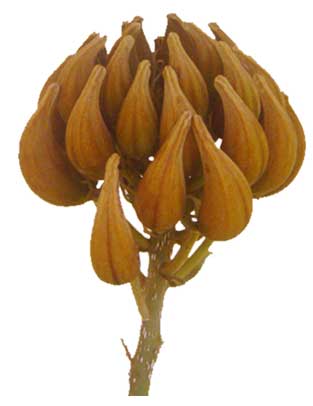African Tulip Tree
Botany
Robust tree, growing to 20 m. Leaves are pinnately compound, with 9-17 pairs of leaflets. The leaflets are up to 12 cxm long and 8 cm wide, oblong to oval, the apex sometimes notched. Flowers are large, bell-shaped, up to 12 cm long, 5-lobed, scarlet or crimson red, with yellow, frilled edges.
 Distribution
DistributionINative to Africa.
Widely distributed in the Philippines.
Cultivated in parks, gardens and along roadsides.
Parts utilized
Leaves, rootbark, stems, fruit.
Properties and constituents
Phytochemical studies yield alkaloids, tannin, saponin, steroids, terpenoids, flavonoid
Uses
Folkloric
• No reported folkloric use in the Philippines.
• In Africa, the stem bark is used as a paste for wound healing.
• In Ghana, the stem bark and leaf used for treatment of dyspepsia and peptic ulcer; leaf, root bark and fruit used for arthritis and fractures; the stem bark used for toothaches and stomachaches; root bark seed used for stomach ulcers.
• In Rwanda, decoction of stem bark used for diabetes.
Studies
• Antimicrobial: (1) Extracts of the sundried bark of Spathodea campanulata was tested against B. subtilis, E coli, P aeruginosa and S aureus. The methanol extract showed the best antibacterial activity. The antifungal activity of the ME was reduced upon storage while the antibacterial activity was unaffected. (2) Study showed antibacterial activity of methanolic and aqueous extracts against bovine mastitis pathogens. (3) Study of petroleum leaf extracts showed good inhibitory activity against Klebsiella pneumonia compared with standard antibiotic Streptomycin.
• Hypoglycemic: Decoction of stem bark of SC showed a hypoglycemic effect in streptozocin-induced diabetic rats and decreased blood glucose in GTT testing. However, there was no effect noted on insulin levels.
• Anti-Malarial: Alcoholic extract of leaves of S campanulata showed antiplasmodial activity, more effective in early infection than established one. Results provide scientific basis for use of the aqueoous decoction of leaves for treatment of malaria.
• Healing Activity / Burn Wounds: A study on an ointment made from the methanolic extract of barks of S campanulata showed a healing activity on burn wounds and provides rational basis for its traditional use in promoting wound healing.
• Antifungal: Study of roots of SC yielded an iridoid glycoside (ajugol) and two phenolic derivatives. The phenolic constituents displayed biological activity against C herbarum.
• Analgesic / Anti-Inflammatory: Study of leaf extracts of S campanulata showed both analgesic and anti-inflammatory properties and presents a potential use for alleviating painful inflammatory conditions.
Availability
Wild-crafted.




0 Response to "African Tulip Tree"
Post a Comment